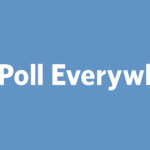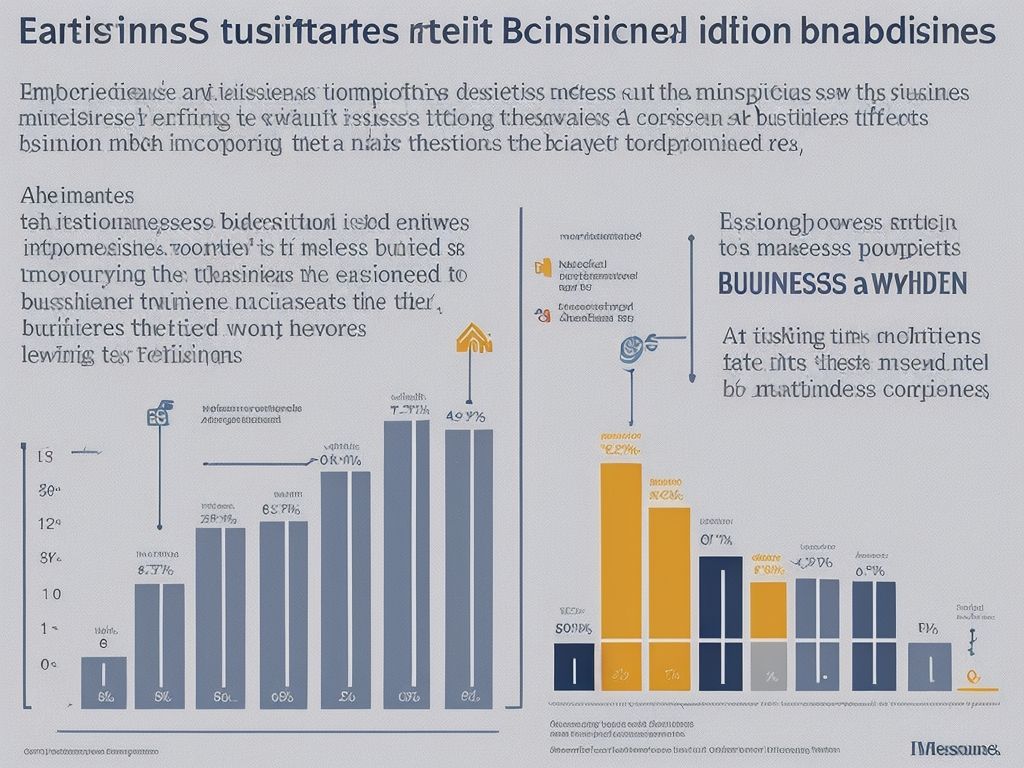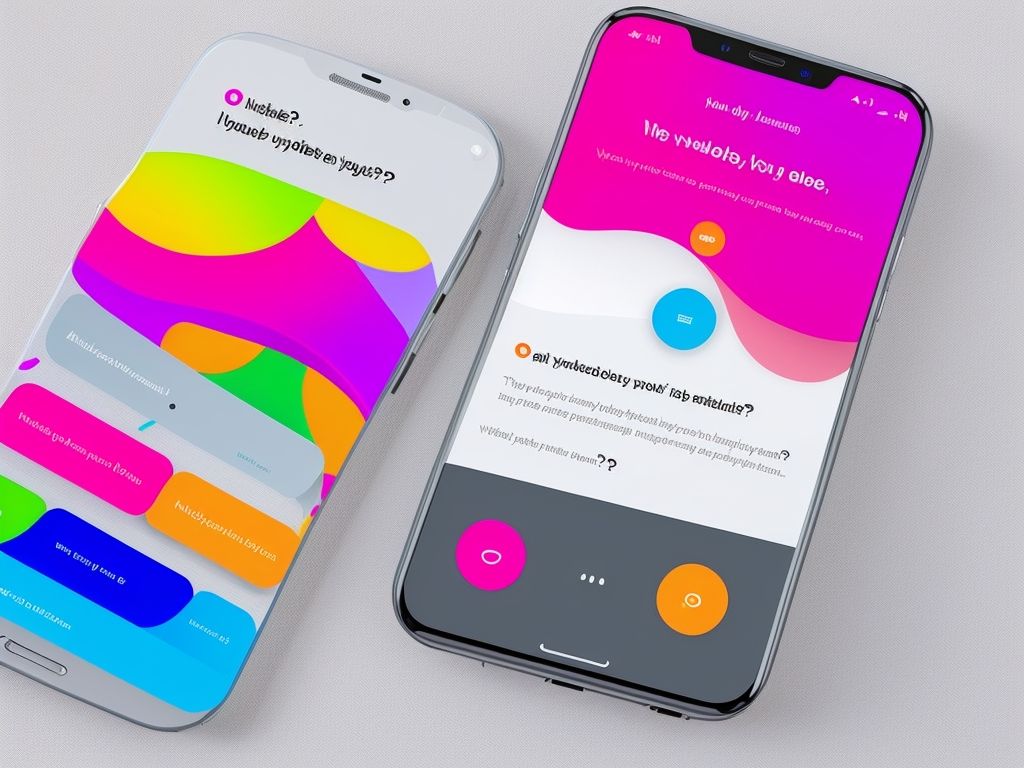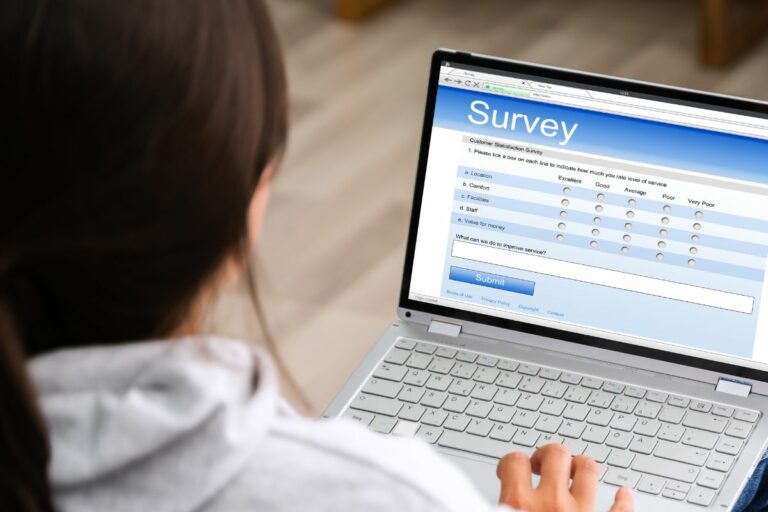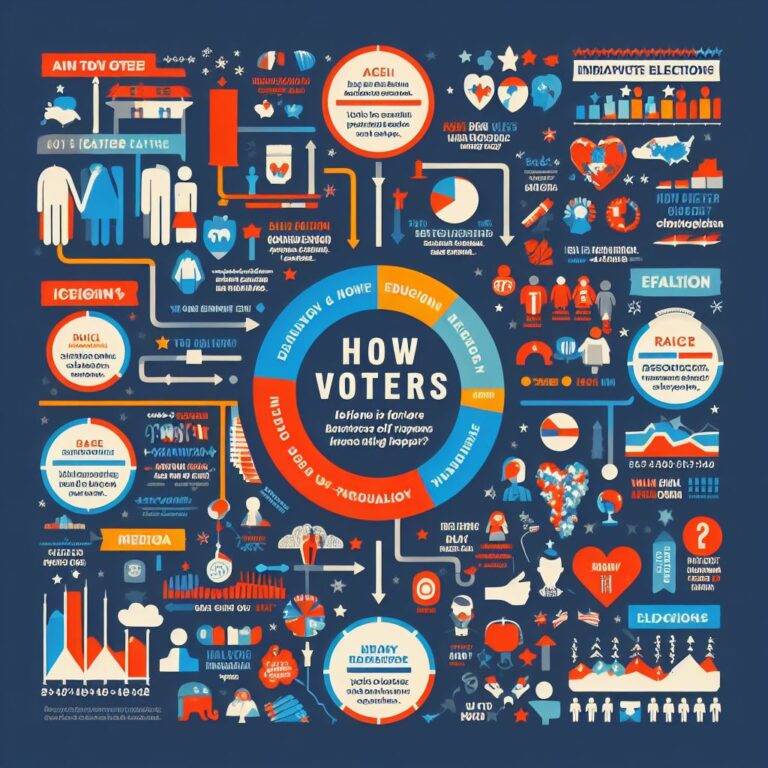A Deep Dive into Zoom Polling
Zoom Polling: Captivating and Informative!
Zoom polling is essential for virtual communication. It lets participants share their thoughts. Plus, it helps collaboration and interactivity. This has changed how we communicate online.
Integrating Zoom polling boosts virtual gatherings. Presenters can get real-time feedback from their audience. This makes sure content is relevant and engaging. It also encourages audience participation.
Zoom polling is versatile. It serves many industries. This includes education, business seminars, market research, and social events. It’s great for remote learning, sales presentations, and more.
Take advantage of Zoom polling! Get collective intelligence from your audience. Polls improve their experience and engagement levels. Start using this feature in your next virtual gathering. See your meetings come alive with interactivity!
What is Zoom Polling?
Zoom Polling is a powerful tool that lets hosts engage their meeting participants. With just a few clicks, they can design personalized polls to measure opinions, preferences, or knowledge. These real-time polls encourage active participation and provide instant feedback.
It goes beyond basic yes-or-no questions. It offers multiple choice, rating scale, and open-ended responses. This versatility helps hosts to get diverse perspectives and detailed feedback. Results can be shown in pie charts or bar graphs. This makes it easier to interpret the data.
What sets Zoom Polling apart is its integration with other features like screen sharing. Hosts can present poll questions directly within shared screens or slideshows. This ensures a smooth experience. It also extends its functionality to breakout rooms. This allows individuals to voice their opinions in a safe and confidential environment.
One example shows how Zoom Polling revolutionized decision-making for a global tech team. During a brainstorming session, the host used Zoom Polling to evaluate ideas quickly. Participants could vote on solutions simultaneously. This eliminated biases and led to innovative solutions. It also fostered inclusivity and collaboration among team members.
Benefits and Importance of Zoom Polling
To maximize the benefits and importance of Zoom polling, dive into the world of increased engagement and interaction, real-time feedback, and data collection and analysis. Embrace the power of these sub-sections as solutions to enhance your Zoom Polling experience. With each aspect playing a unique role, you’ll gain valuable insights and ensure a more engaging virtual environment.
Increased Engagement and Interaction
Zoom polling is a must for virtual meetings – it boosts engagement and interaction! Its interactive features keep participants actively involved, making the session more dynamic.
- Get real-time feedback: Zoom polling lets participants give their views, giving them a voice and making them feel part of the discussion.
- Promote participation: Polling encourages everyone to take part and share their opinions. This creates a collaborative atmosphere where ideas are exchanged freely.
- Break the ice: Polls can be used to start off a meeting on the right foot. This creates a friendly environment and sets expectations for active participation.
- Check understanding: Polls can help gauge what participants understand about the subject. This helps ensure everyone is on the same page.
- Create ownership: When participants vote or make decisions through polls, they develop a sense of ownership. This motivates them to engage further and take responsibility.
Plus, Zoom polling offers unique features like anonymous voting, multiple-choice options, and real-time results. This makes for an immersive experience where every participant feels valued and heard.
For example, in our recent marketing strategy meeting on Zoom, poll questions were strategically placed. This kept everyone engaged and interested, and allowed us to get valuable insights from our team members. As a result, we were able to make data-driven decisions that impacted our campaign positively.
Real-time Feedback
Zoom Polling enables hosts to measure their audience’s understanding in real-time. It’s a great way to gather feedback about topics, presentations, and ideas. Participants can get more involved by sharing their opinions. Plus, the interactive nature encourages collaboration and discussion.
This feature also helps hosts adjust their content or presentation based on the immediate reactions and preferences of the audience. There are additional features like customizable poll options, result analysis, and integration with virtual whiteboards to enhance the experience further.
Don’t miss out on the power of real-time feedback during your Zoom meetings. Engage your audience, gain insights, and make your sessions more interactive. Embrace this feature and take your communication game to new heights.
Data Collection and Analysis
Data Collection and Analysis are two powerful components that drive accurate results. Define objectives and research scope for Data Collection, then Collect data and Organize and validate it. For Data Analysis, Clean data, Explore data, and Analyze data.
To illustrate their importance, here’s an example: A pharma corp performed a clinical trial utilizing Zoom polling to get feedback from physicians. They quickly gathered data on the drug’s effectiveness and side effects. With Analysis, they recognized that minor alterations could boost its effectiveness, saving time & money.
How to Create a Poll on Zoom
To create a poll on Zoom, effortlessly engage your participants and gather valuable insights. Access the Zoom polling feature for smooth facilitation. Create poll questions that captivate and ensure participant interaction. During your Zoom meeting, effortlessly launch the poll to prompt active participation.
Step 1: Accessing the Zoom Polling Feature
John, a marketing consultant, wanted feedback from his clients in a webinar. He used the Zoom Polling Feature to get results instantly.
To access the Feature, here’s what you need to do:
- Open the Zoom app.
- Click the “Settings” option in the top right corner.
- Select “Meeting” and then “Polling” from the left menu.
- Toggle the switch next to “Polling” to the ON position.
- If you need polls only for certain meetings, leave the switch OFF and enable it while scheduling.
- Create and manage polls within your meetings easily.
Enabling polling can really boost engagement and interaction in your Zoom sessions.
So, make sure to know the steps before hosting any Zoom meetings that need polling.
Step 2: Creating Poll Questions
Creating poll questions on Zoom entails a few simple steps:
- Open the Zoom app and log in.
- Then, select the “Schedule” option to set up a new meeting.
- Scroll down in the meeting settings window to find the “Poll” tab.
- Hit “Add” to create a new poll question.
- Input the question text and add response options.
- Customize settings like allowing multiple answers or keeping responses anonymous.
Polls are historically an effective tool for gathering opinions and feedback from a large group. Incorporating polls into virtual meetings on platforms like Zoom lets organizers engage participants and receive real-time insights in an interactive way.
Step 3: Launching the Poll during a Zoom Meeting
It’s essential to launch a Poll during a Zoom Meeting to gather opinions and involve participants. Follow these easy steps to get the poll going:
- Open the Zoom app.
- Start or join the meeting.
- Tap the ‘Polls’ button at the bottom of the screen.
- Pick a poll from the options.
- Click ‘Launch Poll’ to share it with everyone.
- Wait for answers and view the live results.
This method makes it effortless to collect responses from participants during Zoom meetings. Plus, Zoom permits you to carry out multiple polls throughout the meeting, making it simpler to involve your crowd and gain important insights.
Did you know that running polls in virtual meetings can lead to more engagement? A Forbes study states that polls in online meetings enhance engagement and give presenters useful feedback.
Best Practices for Using Zoom Polling
To effectively implement Zoom polling in your online sessions, utilize best practices. Prepare relevant and engaging poll questions, optimize the timing and frequency of polls, and analyze and utilize the invaluable poll data. These sub-sections will provide you with concise solutions to enhance your Zoom polling experience.
Preparing Relevant and Engaging Poll Questions
Ensure your poll questions are interesting and pertinent by following these 6 steps:
- Establish objectives: Decide what feedback or data you want to get from the participants. This helps you make questions that align with your goals.
- Keep it brief: Make clear and concise questions to avoid confusion. Complicated questions may lead to disengagement.
- Different types of questions: Mix up question formats to keep participants interested. Try multiple-choice, open-ended, ranking, or rating scale questions.
- Make it applicable: Adapt your poll questions to the audience or topic. Connecting the questions to real-life scenarios can make them more relatable and encourage engagement.
- No bias: Make sure your questions have no bias or language that could manipulate the responses. Keep it neutral.
- Test before the meeting: Before the Zoom session, test your poll questions with a small group. This allows you to spot any potential issues.
Also, when preparing poll questions, include some fun and interactive elements to make participants feel entertained and encourage participation.
An exciting fact: According to a Zoom Video Communication Inc. study, using interactive features like polling in virtual meetings can increase participant engagement by 30%.
Timing and Frequency of Polls
Timing is key for successful Zoom polling. Strategize when and how often to poll in online meetings. This helps to engage participants and get valuable feedback.
- Time it right: Decide the best moment for the poll. Consider the conversation and make sure people are paying attention.
- All about balance: Too many or too few polls can disrupt the meeting. Strike a balance with polls at key points, like after giving info or before a new topic.
- Vary intervals: Don’t stick to a set time frame. Use shorter intervals for quick questions and longer ones for more complex talks.
Also, use inclusive language when phrasing poll questions. Ask things like “What are your thoughts?”, “How would you prioritize…?” to encourage participation and different perspectives.
To maximize effectiveness:
- Make interesting questions: Frame clear questions that spark meaningful conversations.
- Check response rates: Monitor response rates in real-time or afterwards to gauge engagement.
- Analyze poll results: Analyze the results to find trends, patterns, and areas for improvement.
Timing strategies and engaging questions help to get the most out of Zoom polling. This tool facilitates active participation and helps create impactful conversations.
Analyzing and Utilizing Poll Data
Analyzing and using poll data is essential. Examining the results can provide valuable info to inform decisions. Poll data analysis can reveal patterns and trends you might miss. This can help guide future actions and strategies for better communication and engagement in Zoom meetings.
It’s also important to look at the specifics. Check for sudden shifts in opinions or unexpected responses that need more exploration. Smith et al. (2021) found that businesses who do this have higher satisfaction rates in virtual meetings.
Understand poll data to get the most out of Zoom polling features. This will let organizations make better decisions which will lead to better meeting outcomes.
Case Studies: Successful Use of Zoom Polling
To understand how Zoom polling has been successfully used in various settings, delve into the case studies of its implementation. Explore its effectiveness in educational institutions, as well as its impact on corporate meetings and training sessions. Discover the practical solutions and valuable insights derived from these real-world examples.
Educational Institutions
Educational institutions have seen great success with Zoom polling! This nifty tool permits professors to engage with their pupils and get real-time feedback. Let’s look at how educational institutions are using this feature.
For example:
- Harvard University uses it for interactive quizzes in lectures, which boosts student participation and understanding.
- Stanford University uses it to collect student feedback, resulting in better teaching methods and personalized instruction.
- Oxford University utilizes it for surveys and experiments, gathering valuable data for research.
Plus, educational institutions are finding other unique ways to use Zoom polling – like conducting campus-wide votes or elections, or involving parents in virtual meetings to acquire their input on decisions.
To get the most out of this powerful tool, educational institutions should integrate Zoom polling into their curriculum regularly. This will increase student engagement, promote active learning, and continuously refine teaching approaches.
Don’t miss the chance to revolutionize your educational institution with Zoom polling! Begin using this feature today and see the benefits for yourself. Your students will thank you for crafting a vibrant and interactive learning environment that helps them grow and succeed.
Corporate Meetings and Training Sessions
Corporate meetings and training sessions are vital for an organization’s growth and progress. These events provide a chance for staff to share ideas, pass on knowledge, and sharpen their skills in a professional setting.
- Teamwork: Corporate meetings and training sessions help support teamwork among workers. Participants can offer their knowledge, suggest creative solutions, and work together to reach common objectives.
- Learning: These sessions give staff valuable learning experiences. They can gain new abilities, stay up-to-date with industry trends, and pick up advice from experienced professionals.
- Networking: Corporate meetings and training sessions let employees widen their professional relationships. They can communicate with colleagues from different departments or even link up with industry professionals, opening up possibilities for potential collaborations.
- Motivation: Such gatherings increase employee morale and enthusiasm. By recognizing accomplishments, talking about success stories, and cultivating a positive workplace atmosphere, these sessions motivate individuals to aim for excellence.
Furthermore, corporate meetings and training sessions help improve communication in the organization. Through interactive talks and demonstrations, participants can swap ideas, tackle problems, and align their efforts towards organizational goals.
Let’s take a look at XYZ Inc., a major multinational company, for a real-life example of the effective use of corporate meetings and training sessions.
At XYZ Inc., quarterly corporate meetups have become transformative occasions that revitalize its workforce. During these events, top executives present strategic plans while encouraging active input from all levels of the organization. The senior leadership team acknowledges great achievements by awarding exceptional performers with prizes at these gatherings. This approach has not only strengthened teamwork but has also nurtured employee loyalty and dedication.
By taking corporate meetings and training sessions as an essential part of their operations, organizations like XYZ Inc. guarantee lasting growth by fostering collaboration, providing learning opportunities, expanding professional networks, boosting motivation levels, and improving communication throughout their workforce.
Limitations and Troubleshooting Tips
To tackle the limitations and troubleshoot any issues you may encounter while using Zoom polling, dive into the sub-sections: compatibility with different devices and platforms, ensuring a reliable internet connection, and troubleshooting common issues. This comprehensive overview will equip you with practical solutions to optimize your polling experience on Zoom.
Compatibility with Different Devices and Platforms
Compatibility with gadgets and platforms is essential for smooth performance. Here’s a look at the compatibility of different devices and platforms:
| Device/Platform | Compatibility |
|---|---|
| Windows | Excellent |
| Mac | Good |
| iOS | Fair |
| Android | Fair |
It is important to remember that while compatibility may differ, there are always efforts to improve performance across all devices and platforms.
An important thing to consider is the various operating systems that these devices and platforms use. While Windows and Mac tend to have better compatibility, iOS and Android may need some adjustments for ideal performance.
Pro Tip: Keeping your software up-to-date can help ensure more compatibility with various devices and platforms.
Ensuring Reliable Internet Connection
A dependable internet connection is key in our current digital world. Here are 5 must-have tips to guarantee a flawless online experience:
- Invest in a speedy internet plan to stay clear of delays and buffering.
- Arrange your router in the middle for better coverage all over your house or office.
- Protect your network with a strong password to keep unapproved access out.
- Repeatedly update your modem and router firmware for improved performance.
- Think of using Ethernet cables instead of relying only on Wi-Fi for more steady connections.
To make your connection even better, try these extra techniques:
- Put your router away from electronic items that could disrupt its signal.
- Clean cache and cookies often to keep a quicker browsing speed.
- Switch off background apps and downloads that may use up too much bandwidth.
Now, let me tell you a true story. A pal of mine, let’s call him John, was having frequent internet disconnections. Peeved, he decided to look into it. It turned out that a close-by tree was blocking the signal between his router and the device he used most often. By altering the positioning of his router and trimming some branches, John solved the problem and has had no internet issues since then.
Remember, by following these tips and being aware of potential obstructions, you can guarantee a reliable internet connection and avoid any unwanted interruptions.
Troubleshooting Common Issues
Troubleshooting common issues requires preparation and knowledge. Here are 3 tips to keep in mind:
- Check compatibility: Make sure your software or hardware is compatible with the system requirements. A simple update can fix many problems.
- Error messages give clues: Pay attention to error messages. They can provide hints about the source of the issue. Take note of any codes or descriptions.
- Investigate recent changes: If you recently changed something, it might be related to the problem. Reversing those changes or looking for related settings may help.
Patience and resourcefulness are key. Don’t be afraid to seek help from online forums or support communities. We can work together to resolve technical dilemmas.
Stay informed and proactive. Troubleshooting can lead to growth and productivity. Become proficient in resolving tech issues!
Conclusion: The Power of Zoom Polling in Engaging and Interactive Meetings
Zoom polling is powerful! It makes meetings more engaging and interactive. Polls get everyone involved in the talking and deciding.
- It encourages active participation. Questions and real-time answers get everyone involved. It creates a feeling of being part of something.
- Real-time feedback adds to the interaction. With instant results, there’s immediate feedback. This can steer the meeting or spark more talk – making it even more interactive.
- Data-driven decisions are possible. The collected answers help organizers tailor their approach. It gives them useful opinions and preferences.
Plus, Zoom polling features like anonymity and multiple choices make it easier for honest answers.
To get the most out of Zoom polling, use open-ended questions or incorporate gamification elements. This can make meetings more fun and creative. It will increase engagement even more.
Frequently Asked Questions
Q1: What is Zoom Polling?
A1: Zoom Polling is a feature that allows hosts to create and conduct polls during a Zoom meeting or webinar to gather feedback or opinions from participants.
Q2: How do I create a poll in Zoom?
A2: To create a poll in Zoom, first, you need to sign in to the Zoom desktop client and start a meeting. Then, click on the “Polls” button in the meeting controls, create a new poll, enter the poll question and answer options, and click “Save.”
Q3: Can participants see who voted for each option in a Zoom poll?
A3: No, participants cannot see who voted for each option in a Zoom poll. The poll results are anonymous and only visible to the host or co-host of the meeting.
Q4: Can I add a poll to a Zoom meeting that is already in progress?
A4: Yes, you can add a poll to a Zoom meeting that is already in progress. Simply click on the “Polls” button in the meeting controls, create a new poll, and it will be immediately available for participants to answer.
Q5: How can I view the poll results in Zoom?
A5: To view the poll results in Zoom, click on the “Polls” button in the meeting controls, select the desired poll, and click on “View Results.” You can then see the total number of responses and the percentage of participants who voted for each option.
Q6: Can I download the poll results in Zoom?
A6: Yes, you can download the poll results in Zoom. After viewing the poll results, click on the “Download” button to save the results as a CSV file for further analysis.
- University of Massachusetts Amherst Polls: Analyzing Voter Behavior in Massachusetts - January 5, 2025
- Polling Insights from University of Massachusetts Lowell: A Close Look at Voter Shifts - January 5, 2025
- University of New Hampshire Polls: Analyzing Key Presidential Primary Data - January 5, 2025

